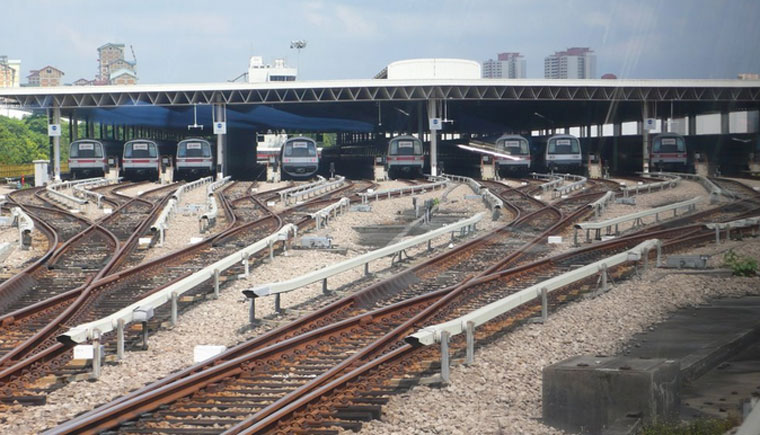Why has the security of the SMRT Bishan depot been repeatedly breached over the last few years?
What's so attractive about the depot that vandals favour it as a target and strike there repeatedly? Is it really because security is lax or could there be other reasons?
Here are 3 plausible explanations the SMRT Bishan depot might just be the most difficult place to protect in Singapore as a result of its unique location:
1. It is built on 6.5 hectares of land
One hectare of land is approximately the size of a football pitch.
A total of 6.5 hectares is equivalent to 300,000 m² or six football fields.
Anyone who has been through National Service and have done guard duty before can attest to the fact that having to prowl the perimeter of a protected area of such size is an insurmountable task.
The total fencing for the Bishan depot currently already amounts to a 6.5km perimeter. Which means, to physically walk that distance will probably take two hours minimum.
And to do it night after night rotating shifts is going to be both mentally and physically tedious, and not to mention, manpower intensive.
Plus, just to ensure the perimeter is safe at any give time, there must be multiple pairs of prowlers to keep a lookout.
And to double protect the perimeter would mean erecting another 6.5km of fencing in total, which might seem like a good idea, until we consider that...
2. There are drains running in and out of the depot
Having such a vast perimeter is a weakness. But what increases the depot's vulnerability is the fact that there is at least one drain that runs under the depot.
PUB, the national water agency, has said that it has three outlet drains that run through Bishan Depot.
The entrance and exit points of two covered drains are outside the depot. While the third drain, which is open, is fenced out from the depot premises, PUB said.
In TODAY, SMRT declined to comment on whether investigations revealed that the alleged vandals had entered the depot through the canals and drains.
While a breach from the drain is always a possibility, they cannot be re-routed or removed because it is connected to the Kallang river, and therefore, serves as a major drainage system.
Furthermore, there are conflicting accounts about whether Bishan depot is built on a flood plain. SMRT said it is but PUB said it has clarified with SMRT that Bishan depot was not built on a flood plain.
However, one thing is certain: Even if it is not exactly a flood plain, it is apparent that the land Bishan depot is built on is lower than the surrounding areas. And being lower than its surroundings is a disadvantage.
Because if the depot was built on elevated ground, anyone within its premises would have a better view of the surroundings.
3. It was built before terrorism was a threat a.k.a. pre-9/11
It is true that the Bishan depot is a vital facility that cannot have its security compromised, or else, it will escalate into a major national security threat.
But we need to consider the fact that the depot was opened in 1987, which means it was constructed with an open design during a period of relative peace in the region before the onslaught of terrorism against civilians in the post-9/11 era.
Anyone who has travelled past the depot along the CTE will note that one feature of the depot is that there is no original attempt to conceal the interior from public view. The interior of the depot is fully visible from adjacent buildings.
The considerations of the 1980s and now are definitely vastly different, signalling a planning oversight.
And to correct for that now seems not only impractical, but highly impossible.
Last but not least, even though the security lapses has been blamed on SMRT, we need to remember that the people tasked with protecting SMRT's Bishan depot is Certis Cisco, who have been employed for the task.
They are supposedly the experts and hired security contractor who oversees that all vulnerabilities are reduced to zero. As a major contractor who also protects numerous government buildings in Singapore, the public eye should also be cast on them.
On SMRT's part, it is part of their due diligence to mend any security loopholes and keep their facility top notch, or at least, be perceived to be doing so.
Channel NewsAsia noticed that there was graffiti on a canal wall when they checked the area around the depot yesterday. Going by the Broken Windows Theory, maintaining and monitoring urban environments in a well-ordered condition may stop further vandalism and escalation into more serious crimes.
Top photo via
If you like what you read, follow us on Facebook and Twitter to get the latest updates.
If you like what you read, follow us on Facebook, Instagram, Twitter and Telegram to get the latest updates.



